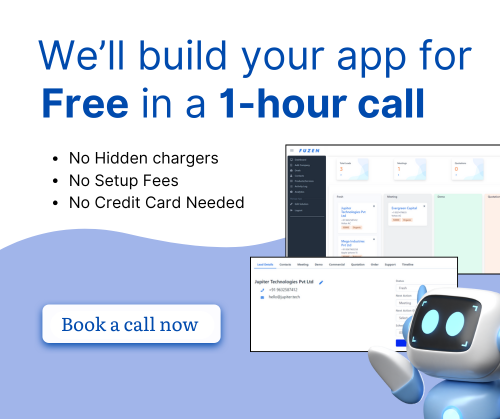No-Code CRM for E-commerce Retargeting
E-commerce retargeting is a strategy that focuses on engaging visitors who have shown interest in your products but haven't yet made a purchase. It's a way of reminding potential customers about what they left behind, nudging them to come back and complete the sale. Retargeting is crucial in today's digital landscape, where many visitors browse but don't immediately buy.
Why is it so important? Well, most visitors don't convert on their first visit to an online store. Retargeting helps recapture these lost opportunities by keeping your products in their minds. It also works wonders for upselling existing customers by showing them related products or upgrades based on past purchases.

Statistics show that retargeting can significantly boost online sales. According to industry studies, retargeted ads are 76% more likely to get clicks compared to regular display ads. Additionally, many marketers find retargeting to be one of the most effective strategies for conversion optimization.
In essence, e-commerce retargeting is a powerful tool in your marketing arsenal, turning missed opportunities into sales and enhancing customer engagement.
Role of CRM in E-commerce Retargeting
Customer Relationship Management (CRM) systems are a game-changer when it comes to e-commerce retargeting. They allow businesses to easily leverage valuable customer data to refine and enhance retargeting strategies. With CRM, you can gain insights into abandoned carts, browsing history, and past purchases, creating a clear picture of customer behavior.
So, how does it work? A CRM system identifies users who have left items in their shopping carts without completing the purchase. It can also track the pages and products a visitor interacted with, allowing you to understand what caught their interest. By analyzing past purchases, CRM can determine which products might appeal to upsell opportunities.
CRM systems don't just stop at identifying opportunities. They play a crucial role in establishing automated workflows that trigger retargeting campaigns. For instance, once a potential customer abandons their cart, the CRM can automatically send them a reminder email with a special offer. This is done without the need for manual intervention, saving time and effort.
By efficiently utilizing CRM systems, businesses can spot retargeting opportunities that might otherwise go unnoticed. Plus, automated workflows ensure that these opportunities are acted upon quickly and precisely, leading to improved conversion rates and customer retention.
Audience Segmentation for Effective Retargeting

Audience segmentation is a key element in successful retargeting campaigns. By dividing your audience into specific groups based on their behavior and preferences, you can tailor your messages to hit the right note with each segment. This personalized approach is crucial for increasing conversion rates.
How can you segment your audience effectively? Start with user activities. Look at how visitors are interacting with your site. Are they showing interest in certain products or categories? This information helps identify segments based on specific interests.
Next, consider purchase behavior. Analyze past transactions to see which products or services resonated most with different customer groups. This insight allows you to craft targeted offers that align with their purchasing patterns.
Also, engagement level plays a significant role. Some customers might engage frequently and others occasionally. High engagement could indicate loyalty or strong interest, making these customers prime targets for retargeting efforts focused on upselling and cross-selling.
By tailoring your retargeting messages to these distinct audience segments, you can provide content that resonates personally. This approach can boost response rates and ultimately, drive more sales. Segmentation makes your communication relevant and valuable, rather than generic and overlooked.
Timing and Personalization of Retargeting Messages
The timing of your retargeting messages can significantly influence their effectiveness. Sending these messages at the right moment can grab your audience's attention and prompt them to take action. To maximize impact, it's crucial to understand when your customers are most likely to respond.
Optimal timing involves analyzing user behavior. Look for patterns in shopping habits, such as peak browsing times or seasonal trends. You can then schedule your retargeting messages when your audience is most active. This ensures you're reaching out when they're more likely to engage.
Beyond timing, personalization is key. Personalized messages connect more deeply with your audience. Crafting content that echoes the interests and needs of different segments is far more effective than generic messaging.
To write personalized copy that resonates:
- Address the customer by name. It adds a personal touch that grabs attention.
- Reference past purchases or wishlist items to remind them of their interests.
- Highlight exclusive offers or promotions relevant to their previous shopping activity.
- Use language and imagery that speaks directly to the individual needs and preferences of each segment.
Combining well-timed messages with personalized content creates a powerful retargeting strategy. This tailored approach not only captures the interest of your audience but also improves the likelihood of conversion, fostering stronger customer relationships in the process.
Examples of Retargeting Channels
Choosing the right retargeting channel can amplify your efforts to reconnect with potential customers. Here are some popular retargeting channels that have proven effective in the e-commerce world:
Facebook Ads
Facebook offers powerful tools for retargeting. With its vast user base, you can reach a broad audience with personalized ads. Facebook Ads allow you to target users based on their activity on your website, interests, and demographics. One key advantage is the ability to create visually engaging content that resonates well on social media. However, the costs can add up, especially if bidding for highly competitive ad spaces.
Google Ads
Google Ads provide excellent retargeting opportunities through Display Network and Remarketing Lists for Search Ads (RLSA). Google Display Network covers large volumes of websites, enabling ads to appear almost anywhere your targeted audience might visit. The main advantage is its extensive reach and the ability to customize ads based on user interactions. But due to its expansive nature, it might require a higher investment and more management to achieve specific targeting effectively.
Email Marketing
Email marketing remains a sturdy channel for retargeting due to its direct approach. You can deliver personalized content right to your customer's inbox, encouraging return visits and purchases. With a well-maintained list, emails can offer tailored messages and incentives to previous shoppers. The challenge with email is ensuring that your messages don't end up ignored or in spam folders, making it essential to craft compelling subject lines and content.
Ultimately, choosing the right channel depends on your goals and budget. Facebook Ads are great for visually impactful campaigns, Google Ads lets you capitalize on broad reach, and email marketing provides a personal touch. Weigh the strengths and limitations of each to devise a strategy that connects best with your audience.
Implementing No-Code CRMs like Fuzen for Retargeting
No-code CRM tools like Fuzen are changing the game for e-commerce businesses looking to streamline their retargeting efforts. These platforms offer a simple, cost-effective way to set up custom retargeting automations without diving into complex coding.
One major advantage of using Fuzen is cost savings. Traditional software development for retargeting and customer management can be expensive, often requiring ongoing investments in development and maintenance. Fuzen allows users to save 80%-90% in development costs because the no-code tools eliminate the need for technical expertise.
This cost advantage also extends to avoiding pricey SaaS subscriptions. Instead of paying hefty monthly or yearly fees for third-party retargeting tools, businesses can build tailor-made apps with Fuzen, paying only minimal hosting costs. The no-code setup simplifies the process, enabling users to create customized retargeting strategies that meet their unique business needs.
With Fuzen, configuring tailored campaigns becomes effortless. Users can easily set up workflows that trigger personalized e-commerce retargeting messages based on customer actions without the hassle of traditional coding. The platform is intuitive and user-friendly, allowing businesses to focus on refining strategy rather than tech issues.
Additionally, Fuzen’s strong AI integrations make it possible to create sophisticated e-commerce retargeting automations using simple prompts. You just describe your needs and let the platform do the heavy lifting, enabling e-commerce businesses to boost performance and stay ahead in the competitive market.
Conclusion
Throughout this blog post, we've explored the pivotal role of CRM systems in enhancing e-commerce retargeting strategies. By leveraging CRM data on customer behavior, businesses can create more effective retargeting campaigns. Audience segmentation allows tailored messaging, boosting engagement and conversion rates.
Optimal timing and personalized content make retargeting messages more impactful, ensuring they resonate with potential customers. We've also seen how no-code solutions like Fuzensimplify the deployment of custom retargeting automations, offering cost savings and ease of use.
These strategies can transform missed opportunities into successful conversions, optimizing your e-commerce performance. I encourage you to explore these valuable tools and techniques, empowering your business to thrive in the competitive digital marketplace.

